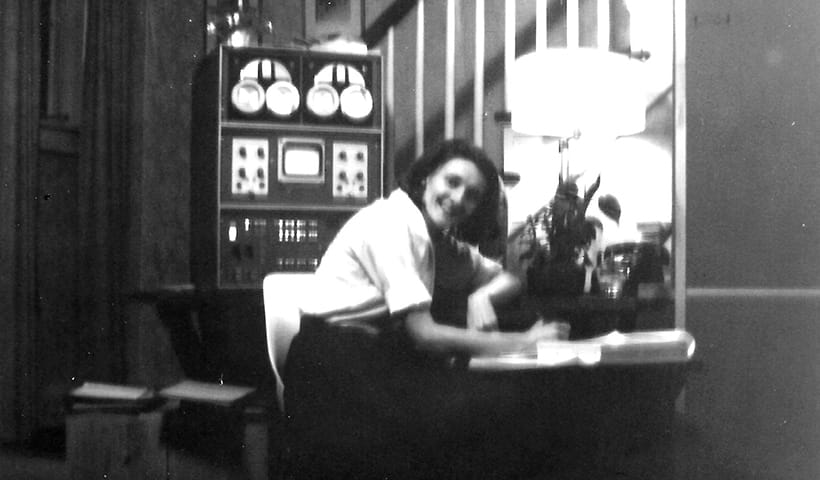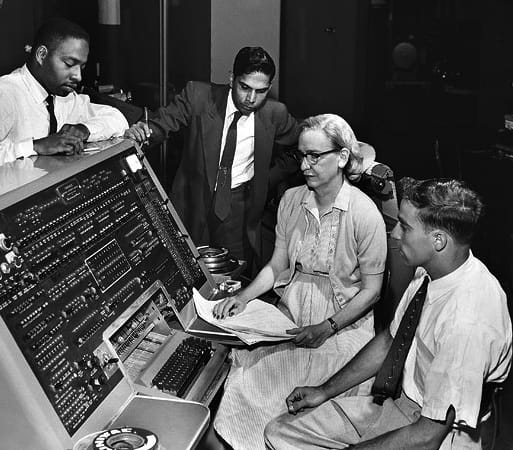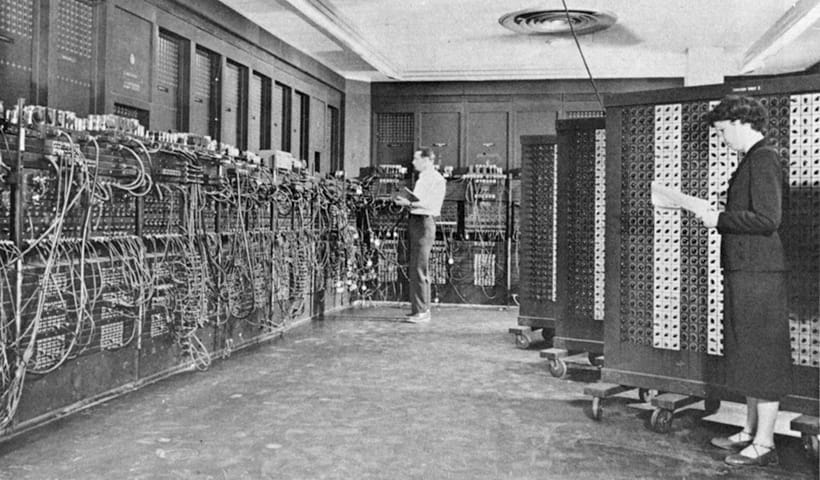To celebrate International Women’s Day 2020 , I thought what a great excuse to find out more about some of the brilliant women who were pioneers in the world of coding.
What I discovered along the way was some very surprising information around just how involved women were in the early days of the code writing process, and how the decades that followed completely flipped those statistics on their head.
It’s our pleasure to highlight the accomplishments of three phenomenal female coders whose work made significant contributions in what was a fledgling field when they started.
1. Mary Allen Wilkes

Photo of Mary Allen Wilkes - With the LINC computer at Home - 1965 [cropped] ( Wikimedia Commons )
Upon graduating from Wesley College in 1959, Mary Allen Wilkes found herself in a computer programming job at M.I.T. after marching into their employment office and asking, “Do you have any jobs for computer programmers?”
In those days, no one had experience programming, so people were hired based on a series of aptitude tests designed to evaluate their logical thinking. Wilkes became a programming whiz, cutting her teeth on programming the IBM 704 and IBM 709. In 1961 she was chosen for the prestigious LINC project, which was the forerunner to the personal computer.
She is best known for her work on the design of the interactive operating system LAP6 for the LINC and being the first person to use a personal computer in the home.
“We had the quaint notion at the time that software should be completely, absolutely free of bugs. Unfortunately, it’s a notion that never really quite caught on.” — Mary Allen Wilkes
2. Grace Hopper

SI Neg. 83-14878. Date: na. Grace Murray Hopper at the UNIVAC keyboard, c. 1960. Grace Brewster Murray: American mathematician and rear admiral in the U.S. Navy who was a pioneer in developing computer technology, helping to devise UNIVAC I. the first commercial electronic computer, and naval applications for COBOL (common-business-oriented language). Credit: Unknown ( Smithsonian Institution )
Prior to joining the Navy where her computing career began, Grace Hopper earned her PhD in mathematics from Yale.
In 1949 she was part of the team that developed the UNIVAC I computer. One of her greatest legacies’ in the coding world was her belief that a programming language based on English was a possibility.
It was her program linker and work on the first compiled languages like FLOW-MATIC that lead to the development of “common business-oriented language” or COBOL as it is better known.
For decades COBOL was used in business, finance, and administrative systems for companies and governments, and still exists in some legacy systems today.
Hopper is often referred to as, “the (grand)mother of COBOL”.
3. Betty Holberton

ENIAC in Philadelphia, Pennsylvania. Glen Beck (background) and Betty Snyder (foreground) program the ENIAC in building 328 at the Ballistic Research Laboratory [cropped] ( Wikimedia Commons )
Born in 1917, Betty Holberton (née Snyder) attended the University of Pennsylvania where it’s reported that on her first day of classes her math professor said, “You’d be better off staying at home and raising children instead”.
During WWII the US army was hiring women to calculate ballistic trajectories, Holberton was one of 80 chosen by the Moore School of Engineering to assist with these highly complicated calculations.
In 1945, when the US Army-funded the first all-electronic digital computer (ENIAC) to calculate the ballistic projections electronically, she was one of only six selected to program the machine. Holberton and the other five ‘computors’ originally had to program the machine using blueprints and wiring diagrams because it was still highly classified.
After WWII, she helped to develop the C-10 instructions for BINAC and worked alongside Grace Hopper in the early stages of the development of COBOL.
We can also thank her for helping design the numeric keypad and for helping write the first generative programming system.
“Women’s Work”
These brilliant women (and many others) forged ahead in a rapidly growing post-WWII field. Ironically in its early days, programming was seen as “women’s work” and was considered to be very much secondary to the engineering of the hardware. It’s a timely reminder of how gender equality in technology has progressed, and inspiration for the road ahead.
We thank Mary Allen Wilkes, Grace Hopper, and Betty Holberton, and all the female pioneers of coding for their contributions and example.
Find out about the workplace experience of our own female leaders at PaperCut.



